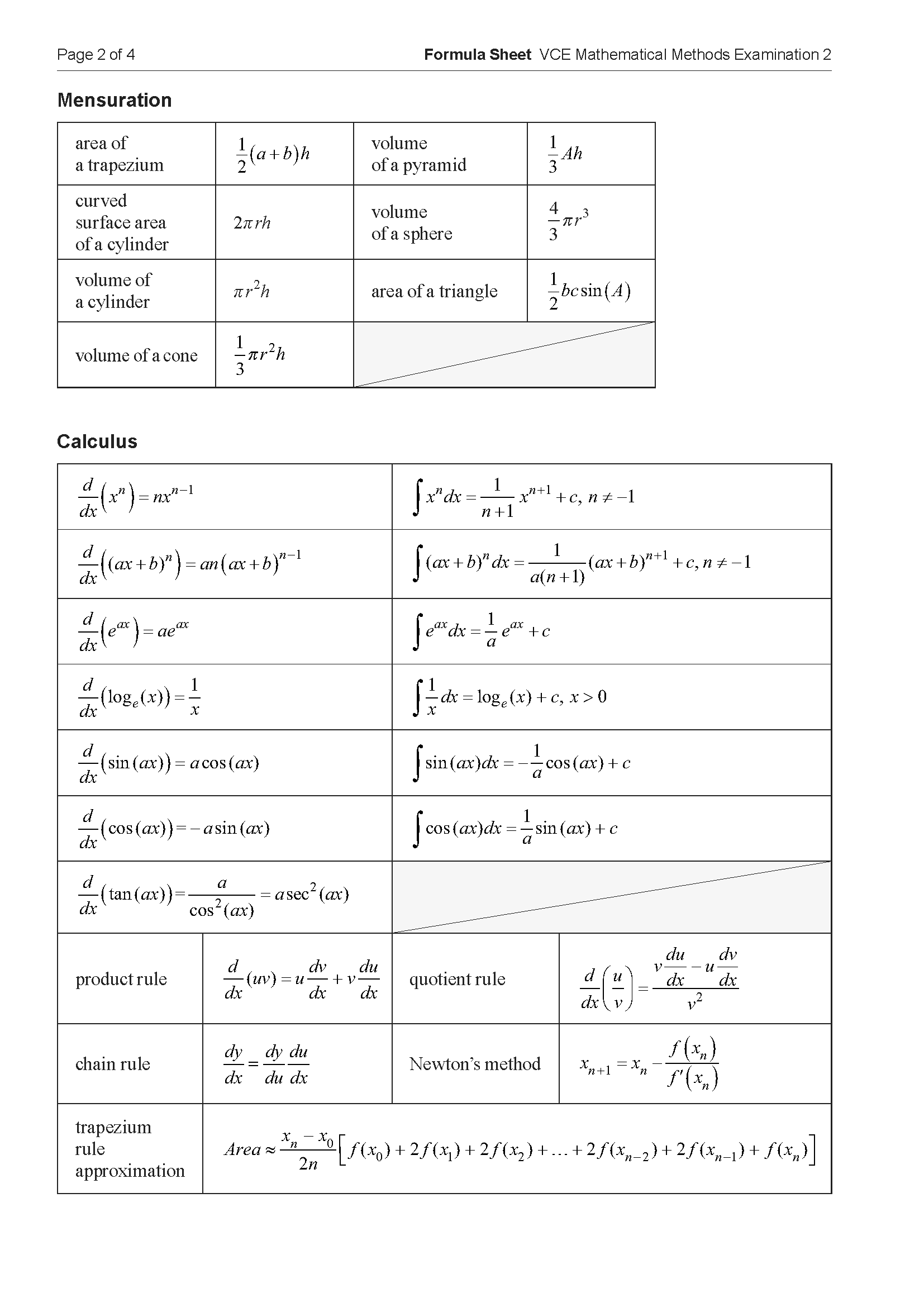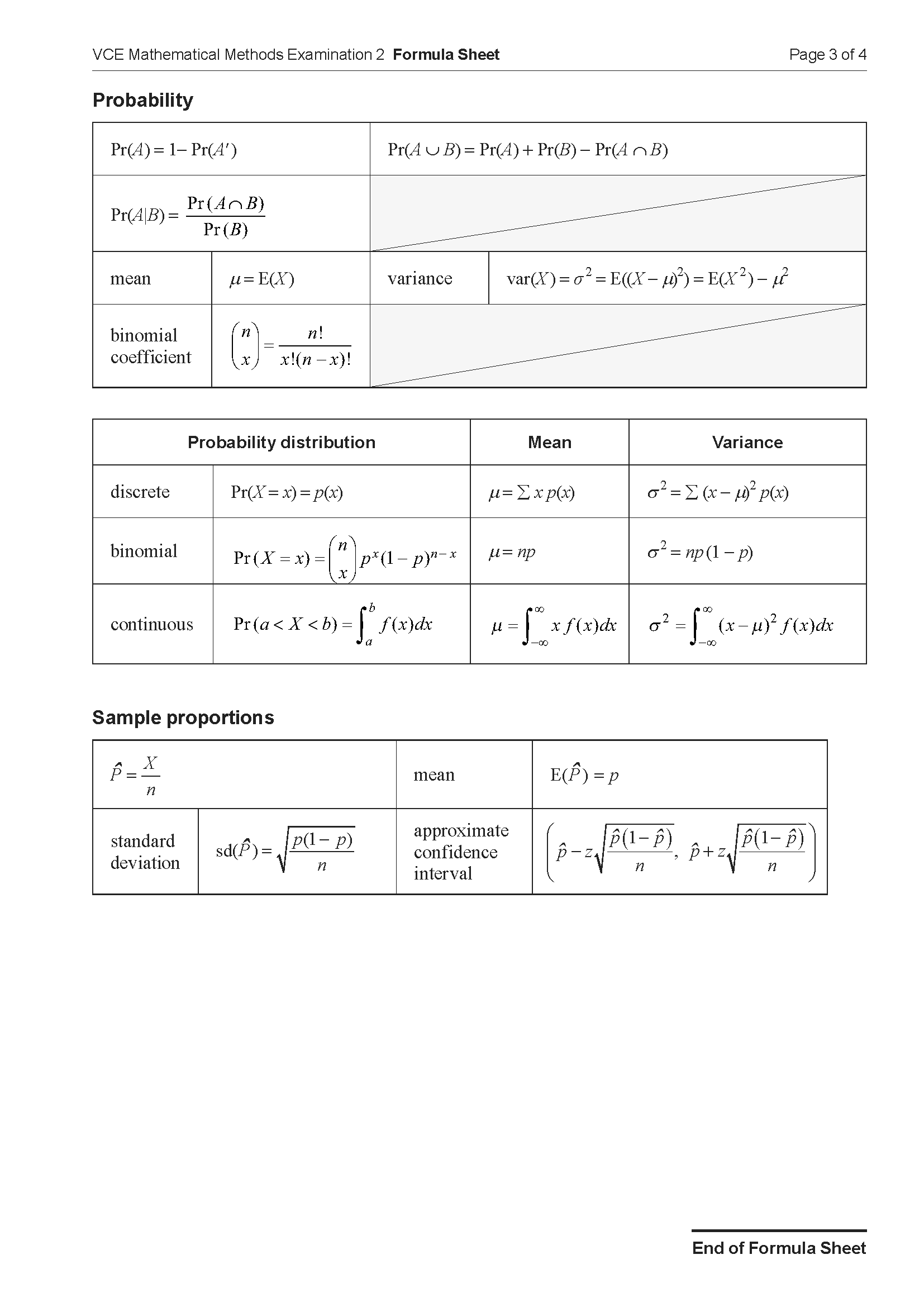VCE Maths Methods Statistics Mini Test 2
Number of marks: 9
Reading time: 2 minutes
Writing time: 13 minutes
Section A – Calculator Allowed
Instructions
• Answer all questions in pencil on your Multiple-Choice Answer Sheet.
• Choose the response that is correct for the question.
• A correct answer scores 1; an incorrect answer scores 0.
• Marks will not be deducted for incorrect answers.
• No marks will be given if more than one answer is completed for any question.
• Unless otherwise indicated, the diagrams in this book are not drawn to scale.
For a certain species of bird, the proportion of birds with a crest is known to be \( \frac{3}{5} \).
Let \( \hat{P} \) be the random variable representing the proportion of birds with a crest in samples of size \(n\) for this specific bird.
The smallest sample size for which the standard deviation of \( \hat{P} \) is less than 0.08 is
- A. 7
- B. 27
- C. 37
- D. 38
- E. 43
End of Section A
Section B – No Calculator
Instructions
• Answer all questions in the spaces provided.
• Write your responses in English.
• In questions where a numerical answer is required, an exact value must be given unless otherwise specified.
• In questions where more than one mark is available, appropriate working must be shown.
• Unless otherwise indicated, the diagrams in this book are not drawn to scale.
In a large population of fish, the proportion of angel fish is \(\frac{1}{4}\).
Let \(\hat{P}\) be the random variable that represents the sample proportion of angel fish for samples of size \(n\) drawn from the population.
Find the smallest integer value of \(n\) such that the standard deviation of \(\hat{P}\) is less than or equal to \(\frac{1}{100}\). 2 marks
An online shopping site sells boxes of doughnuts.
A box contains 20 doughnuts. There are only four types of doughnuts in the box. They are:
- • glazed, with custard
- • glazed, with no custard
- • not glazed, with custard
- • not glazed, with no custard.
- • \( \frac{1}{2} \) of the doughnuts are with custard
- • \( \frac{7}{10} \) of the doughnuts are not glazed
- • \( \frac{1}{10} \) of the doughnuts are glazed, with custard.
a. A doughnut is chosen at random from the box.
Find the probability that it is not glazed, with custard. 1 mark
b. The 20 doughnuts in the box are randomly allocated to two new boxes, Box A and Box B. Each new box contains 10 doughnuts.
One of the two new boxes is chosen at random and then a doughnut from that box is chosen at random.
Let \(g\) be the number of glazed doughnuts in Box A.
Find the probability, in terms of \(g\), that the doughnut comes from Box B given that it is glazed. 2 marks
c. The online shopping site has over one million visitors per day.
It is known that half of these visitors are less than 25 years old.
Let \( \hat{P} \) be the random variable representing the proportion of visitors who are less than 25 years old in a random sample of five visitors.
Find \( \Pr(\hat{P} \ge 0.8) \). Do not use a normal approximation. 3 marks
End of examination questions
VCE is a registered trademark of the VCAA. The VCAA does not endorse or make any warranties regarding this study resource. Past VCE exams and related content can be accessed directly at www.vcaa.vic.edu.au

